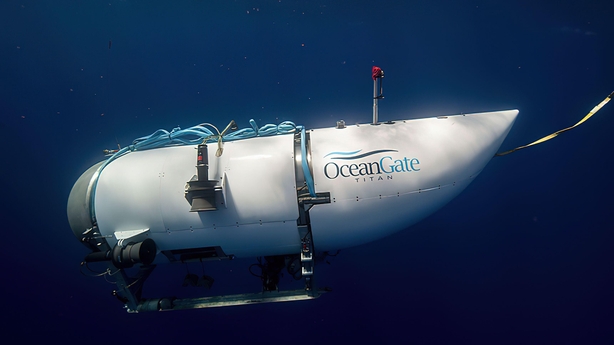The US Coast Guard is leading the search for the Titan, which was reported overdue south of St John's in Newfoundland, Canada, on Sunday.
The Titan's dive is one of many that have been made to the wreck of the Titanic by OceanGate Expeditions since 2021.
With the temperature on the ocean floor near freezing and an estimated 40-hour oxygen supply remaining on the vessel, occupants are at increasing risk of hypothermia or suffocation.
What the US Coast Guard has said
The US Coast Guard on Wednesday morning said: "Canadian P-3 aircraft detected underwater noises in the search area. As a result, ROV (remote operating vehicles) operations were relocated in an attempt to explore the origin of the noises.
"Those ROV searches have yielded negative results but continue.
"Additionally, the data from the P-3 aircraft has been shared with our U.S. Navy experts for further analysis which will be considered in future search plans."
What are submersibles, how do they communicate?
Who is on the vessel?
Rescuers are in a race against time to find five people on board the 6.7m long OceanGate Expeditions vessel.
They are billionaire businessman Hamish Harding, UK-based businessman Shahzada Dawood and his son Suleman, French submersible pilot Paul-Henry Nargeolet and OceanGate chief executive and founder Stockton Rush.
On social media at the weekend, Mr Harding said he was "proud to finally announce" he would be aboard the mission to the wreck of the Titanic.
What are the conditions like?
The submersible, a Cyclops-2 model named Titan, is the second Cyclops model built by OceanGate, after the Cyclops-1.
As there are no doors on the craft, passengers begin their journey by climbing in through an entry hatch which is then bolted shut from the outside before they descend to the Titanic.
There are no seats, meaning passengers must sit on the hard floor without shoes, which they are required to leave behind.

If they need the toilet, they must use a small black box separated by a curtain from the rest of the crew.
Cut off from communication with the outside world, they have no idea whether they will ever be found.
There are no windows except a small porthole directly next to the toilet at the front of the craft, which is also the primary viewpoint to look out at the Titanic.
When the craft was still operational, the pilot used a modified Logitech games controller to steer it.
What other dangers await the passengers?
Even if rescuers locate the craft before its oxygen supply runs out, the occupants face other dangers.
One possibility is that they are stranded at the bottom of the ocean near the site of the Titanic, about 370 miles off the coast of Newfoundland, Canada.
If that is the case, those on board will be faced with a rapidly dropping temperature which puts them at risk of hypothermia.
Rescuers are in a "race against time" to reach the vessel before the oxygen runs out, which is expected to happen on Thursday.
David Gallo, a senior adviser for Strategic Initiatives for RMS Titanic, told CNN that temperatures on the ocean floor are "just above freezing cold".
He said: "It is a race against time - you are fighting oxygen levels, also fighting the cold if the sub is still at the bottom, because the deep ocean is just above freezing, so hypothermia is an issue.
"The water is very deep - two miles plus. It's like a visit to another planet, it's not what people think it is. It is a sunless, cold environment and high pressure."
Could passengers suffer 'the bends'?
According to oceanologist Dr Simon Boxall of the University of Southampton, one common misconception is that people will get decompression sickness, commonly nicknamed "the bends", if the boat moves up to the surface too quickly.
He said those on board would not suffer "ill-effects" because the boat is at atmospheric pressure.
He also said it is a mistake to believe passengers could use escape hatches, because if they did they would be crushed.

